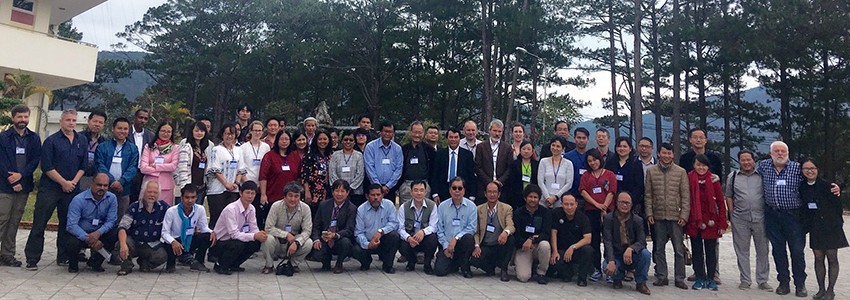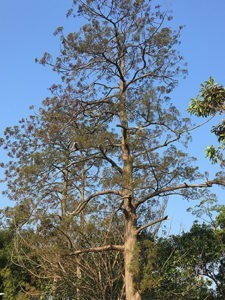The world is getting a whole lot smaller, or so we feel through communications and international migration, amongst other current events. This new state of the world brings new challenges, but also provides great possibilities for uniting to face those challenges. While that may sound quite cheesy (a bit of #EarthOptimism never hurts) it’s true. Especially for the world of plant conservation. The Global Strategy for Plant Conservation (GSPC), an international agreement to curb the extinction of plant species on earth, highlights this ‘strength in numbers’ approach through one of its Targets that ‘Institutions, networks and partnerships for plant conservation (are) established or strengthened at national, regional and international levels to achieve the targets of this Strategy’.
One such regional network, the Southeast Asia Botanic Gardens (SEABG) Network (of which Pha Tad Ke Botanical Garden is a member) plays a key role in contributing to plant conservation through its goals to set standards for working practices among botanic gardens in the region, provide a venue for exchange of technical expertise and linking members with other garden networks while implementing projects to specifically address the GSPC. The network, and others like it, act to acknowledge, support and promote the work of botanic gardens and bring regional knowledge and skills together. The similar climates, geologic pasts and history of plant use (not to mention that plants see no country boundaries) means that the countries of Southeast Asia have much to gain from working together to conserve plant species.

The most recent SEABG Network conference was held in Vietnam in April 2017.
An example of a species crossing country borders and facing a threat of extinction, is the Water Pine (sometimes also called the Chinese Swamp Cypress) or Glyptostrobus pensilis. The species, previously wide spread, is now found in small populations in Vietnam, Laos and Southern China. Conversion of the wetland habitat of the species for agriculture, lack of availability of viable seed and collection of the tree for its fragrant wood has led to the decline of the species in the wild and classification as Critically Endangered on the IUCN Red List. Institutions in the three countries – South China Botanical Garden, CAS; Bidoup-Nuiba National Park (Vietnam); the Institute of Ecology and Biological Resources (Vietnam Academy of Science and Technology) and Pha Tad Ke Botanical Garden (Laos) – are developing a conservation program for the species. The plan involves confirming how many trees there are and where they are in the wild as well as developing and sharing methods for growing the plant with the hopes of replanting the species in the wild as well as at botanical gardens. This Water Pine can be grown and displayed in botanic gardens in the countries across its range to highlight the successes of collaborations in conservation. Hopefully you’ll be able to see it at Pha Tad Ke soon!

Water Pine (Glyptostrobus pensilis) in China. Photo from Xiangying Wen/BGCI China.
This project for the Water Pine represents work towards many of the Targets of the Global Strategy for Plant Conservation, such as the conservation of threatened species both in and outside their natural habitats, the training of people working in national facilities to conserve plant species and the strengthening of regional partnerships. The GSPC, like any good set of goals, has a time frame. The current GSPC targets are for the UN Decade on Biodiversity, 2011 – 2020. With 2020 fast approaching the future of the GSPC is up in the air. Will it be renewed and evolve to face the ever-changing work required for plant conservation? The momentum created by the guidance of the GSPC has been monumental for plant conservation. The progress towards tangible targets of the GSPC have undoubtedly allowed huge steps for global plant conservation and this innovative initiative (the first-ever adoption of targets for biodiversity conservation by the international community) should remain a strong source of guidance in the future.

International cooperation is needed for plant conservation. Photo from Wikimedia Commons.
This guest blog was kindly written by Jean Linsky, South East Asia Botanic Gardens (SEABG) Network Coordinator.You can discover more about Jean’s work through the SEABG Network link below.
Find out more about:
The Global Strategy for Plant Conservation
The South East Asian Botanic Garden Network
Image credits:
Conference of the Parties (COP-11) to the Convention on Biological Diversity Hyderabad India: By Lamiot (Own work) Via Wikimedia Commons


